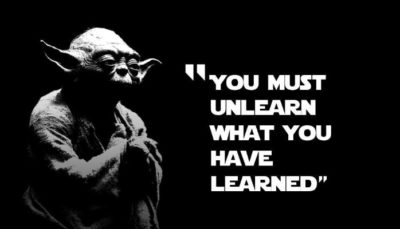Making competitors irrelevant
Too much strategic focus is placed on competitors, when the focus should be on how to make competitors irrelevant. Rather than focusing on market share and the strategic distraction this can create, focus should be on revenue, profitability and business growth. Focusing on customer needs and the optimal business model, rather than replicating the category norm.
Competitors in a category fundamentally offer consumer choice. Idealistically a category offers differing dimensions—price points, quality, taste profiles et cetera . “A choice for every consumer” is the intention. But, the reality is that while there may be some level of brand preference, most consumers are promiscuous—Cadbury or Lindt consumers other chocolates, Coopers or Peroni drinkers other beers and Commonwealth Bank or Bendigo Bank customers other banks. Depending on the mind, mood or needs at the time.
Categories can become a cesspool of competition, typically offering much more choice anxiety than any real differentiation in the mind of consumers. A large range of vanilla products, with very little variation. Think about extreme categories such as wine, where by and large from a consumer perspective, innovation is “yet another wine, basically identical to others.” Rather than satisfying new customer segments and markets as yet untapped.
So, the category becomes aggressively competitive, even bloody, with one brand trying to shout over others …
“BUY BE, BUY ME, BUY ME!”
And, having their products available anywhere and everywhere, but even then, there is typically a competitor immediately beside saying …
“SAME, BUT CHEAPER!”
This is a hard fight, often to the bottom, as the product is devalued and weaker businesses start to be unable to sustain the low margins and incumbent cost structures.
BUT WAIT, there may be another way!
To sail in uncontested waters, sell a different product, to unique customers.
Just think Cirque du Soleil in an sea of Lennon Brothers. Or, Vinomofo in an ocean of Dan Murphy’s. And, Haigh’s Chocolate continues to sell Australia’s best chocolate in their own stores and online. While such brands may not make their competitors disappear, they start to make their competitors irrelevant, and their focus can be on their current and potential customers and ever enhancing their unique business models to ensure revenue, profitability and growth.
So, what does it take to make competitors irrelevant?
It comes down to three innovation priorities, and sweet spot in the middle …
- Relationship innovation: Provide a clever path to starting, nurturing and spreading relationships. Is there a better way to build visibility amongst a non-traditional and uncontested customer base; better communicate a clear value proposition than alternatives; generate leads and sales; and ignite happy customers to refer to friends, family and others to also become customers? Vinomofo has a unique way to engage wine lovers to join online, buy curated and affordable premium wines, and be empowered as a tribe of members. Critically, relationship innovation is about ever seeking to attract new customers and demand. Seeking differentiation and new target audiences. This may through communication of an alternative value proposition with an unmet demand and/or engaging the audience in optimal ways to attract sales.
- Value innovation: Offer a unique value proposition to the customers, likely a wider and distinctive target audience to the traditional category. Offer an enticing value proposition that re-defines the product for a new market. An experience like no other that entices new audiences like Cirque du Soleil away from outdated circuses. Rather than viewing themselves as competing in the circus category, they have redefined themselves into a ‘must see’ global travelling theatrical extraviganza. Offering a unique product with many of the costly elements of traditional circuses, such as animal care, removed from their model. They have created a blue ocean with increased customer value and decreased costs.
- Cost innovation: This comes back to reimagining the underlying cost structure and model to not only reduce the cost of production, delivery and service, but also to improve the customer value. Producing the same or a better product at a lower cost. This may be through reducing the middle tier in the supply chain, such as distributors taking products from the manufacturer to the end consumer, and adding a commission fee. Online largely removes the need for intermediaries. Models such as AirBnB remove the intermediaries and capital investment of large hotel groups by unlocking the share economy, and with this their model reduces the cost structure, allows savings for customers provides market entry protection from competitors.
While competitive advantage will likely be gained from relationship, value or cost innovation in isolation, making competitors irrelevant (or less relevant) typically comes back to all three—the sweet spot:
“Stronger relationship model and unique superior product enticing new customer markets at a lower cost base.”
Think about your own category. Where are the barriers for customers that could be easily removed? Or, restrictive category norms that do not need to be? What is missing from the current category product offering? Are there opportunities to increase quality and/or reduce some standards?
Ultimately, making competitors irrelevant comes back to not getting distracted by them, and avoiding replicating them and competing on price.
The key is about rethinking beyond the category and its niche markets and segments, to the wider market of captured and uncaptured potential customers, and considering how to be a bigger part of their lives.
What are their life frustrations, gaps and opportunities that your product may be able to resolve, beyond the traditional category?
It is easier to just do what everyone else is doing, the category norm, but clearly in most categories it is becoming ever more complex to compete beyond visibility, availability and price. Such models can make growth challenging and place the business, its staff and stakeholders at risk, while offering a lack of true choice and a sub-par products to customers.
Critical is creating a burning platform to motivate the change to a new model. This can be challenging for large, well established businesses with complex organisational structures with low levels of risk tolerance.
Herein lay the opportunity for more agile and less restrictive businesses. While the old brand dinosaurs are slowly moving into new territories, talking big on innovation, it takes a very long time for their instructions to move from relatively small brains in their heads to the feet doing the work.
Entrepreneurs have the opportunity to reimagine with far more agility and stamina. Never before has it been easier to make competitors irrelevant.




